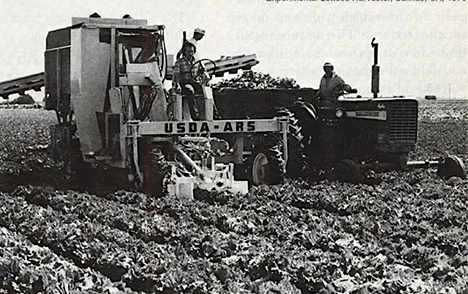This is the age of agricultural robots. Media outlets from the Los Angeles Times to The New Yorker are publishing articles on new robotic advances. The contemporary fascination with robots, artificial intelligence, ‘big data’, and other Silicon-Valley-inspired technology is rooted in a long history of framing automation as natural and inevitable. For the past century, the agricultural industry in California has eagerly anticipated farm mechanization: the replacement of human labor by machine labor in the cultivation and harvesting of vegetable, fruit, and nut crops. Scientists, engineers, and industry boosters have repeatedly promised that new machines will resolve labor shortages, reverse shrinking profit margins, stabilize immigration, sidestep union troubles, and put an end to “back-breaking” working conditions. To evaluate the influence of techno-optimism in agriculture, we trace evolving efforts to mechanize fruit and vegetable crops in California from 1945-1985. During this period, mechanization profoundly transformed farms and farmers: to enable mechanized harvesting, crops were re-engineered, farmland simplified and made uniform, and entire supply chains reconfigured to act like factory lines. But history also shows that mechanization faces significant biological, social, and environmental barriers—not to mention active opposition from farmworkers and rural communities worried about their livelihoods. This suggests we need to look critically into the dynamics and politics of mechanization, and to question the prevailing narratives of inevitable progress.
The Technology Politics of Mechanizing Crops


